[ENG] A visit to Segovia and its colossal aqueduct [ESP] Una visita a Segovia y su colosal acueducto
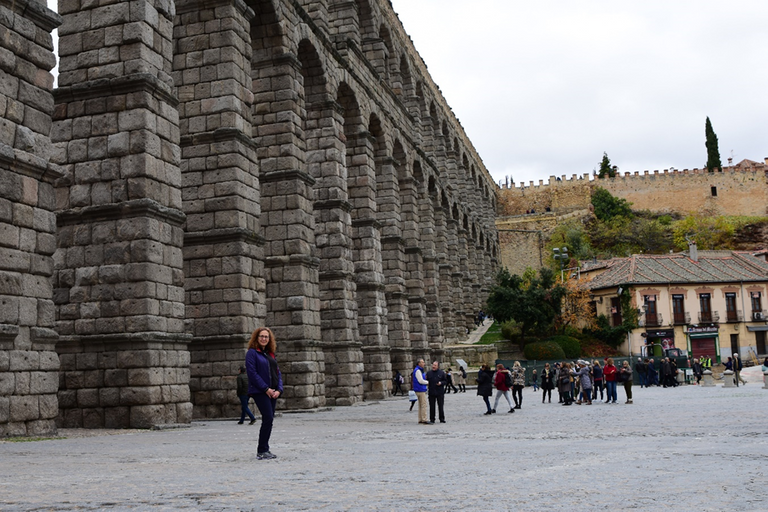
Dear friends, readers and members of the communities who do me the honor of reading and evaluating my posts. Continuing with the use of the series of photographs that my brother-in-law Alfonso has made in his countless trips, on this occasion, I have the pleasure of sharing with you the photos, taken in 2016, of the city of Segovia, in Spain, which I was lucky enough to visit in 1985. Those that are accompanied, as necessary, by an introductory text and footnotes to the photographs that give substance to this writing that I hope you will read with pleasure. Here I send you the link of Alfonso so you can see the quality and variety of his photos
Alfonso Celi @alfceli en Instagram
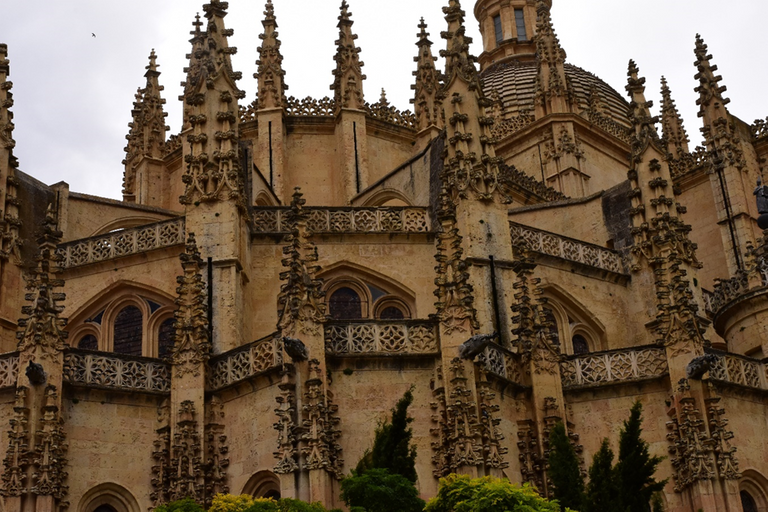
At the junction of the Eresma and Clamores rivers, under the shelter of the Sierra de Guadarrama, the city of Segovia rises, about 92 kilometers from Madrid. It is incredible that a small city such as Segovia has so much history within its walls, in it you can appreciate the cultural and patrimonial legacy left by the coexistence of Muslims, Jews and Christians, all of which can be known walking through its streets, preferably when the weather is mild.
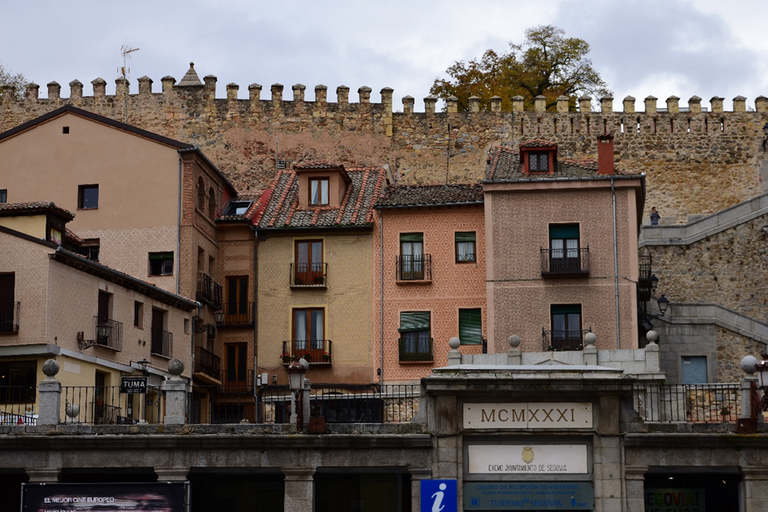
Segovia encloses, within its walls: towers, Romanesque churches, synagogues, convents, squares, gardens and narrow, twisted streets, like a fortress. However, the most internationally known icon of the city is its aqueduct, which is even part of the city's coat of arms, an impressive work of Roman civil engineering that was built at the beginning of the second century, whose purpose was to carry water from the Sierra de Guadarrama to Segovia, to supply the city's inhabitants with the precious liquid. In total, it covers about 17 km with low channels, flush with the ground and even that have become underground today. The aqueduct then rises in the center of Segovia forming 166 arches, at its feet squares such as Azoguejo have been built from where you can see an arcade of the Aqueduct that reaches 28 meters.
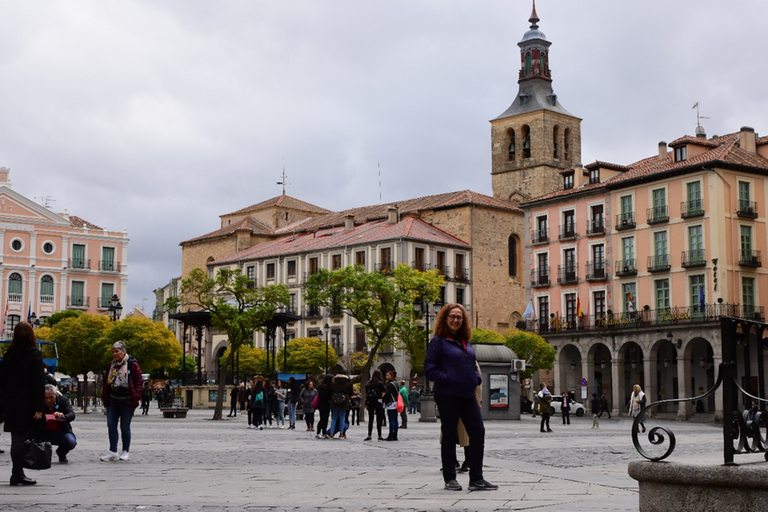
It is impressive that in the construction of the Aqueduct no type of cement or mortar was used between the granite blocks that make up its structure, so that it is held together only by the balance of forces. In Spain, a country of great legends, it is said that there was a young woman in charge of bringing water to the city, but she got tired of doing such an arduous task, so she thought that there should be a way for the work to be done alone, then, made a pact with Satan: if the aqueduct was finished the next morning, she would give him her soul. The young woman was fortunate that at dawn the devil still had a stone to place, so she saved her soul and also achieved her goal of taking the work off her.
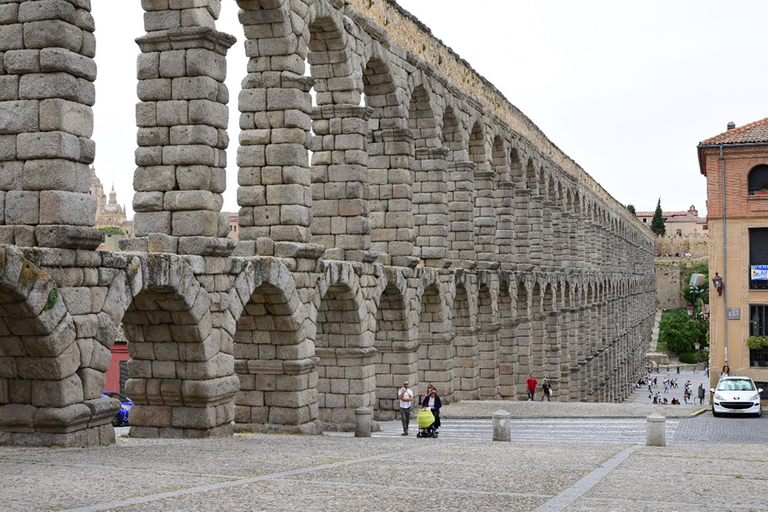
After leaving the emotion produced by the imposing Aqueduct, one enters the city. Upon reaching the Plaza Mayor, you can see the Cathedral, known as the “lady of the cathedrals”. It is a church built between the 16th and 18th centuries, in a Gothic style with some Renaissance features, the City Hall palace and the bust of the poet Antonio Machado that adorn the Plaza.
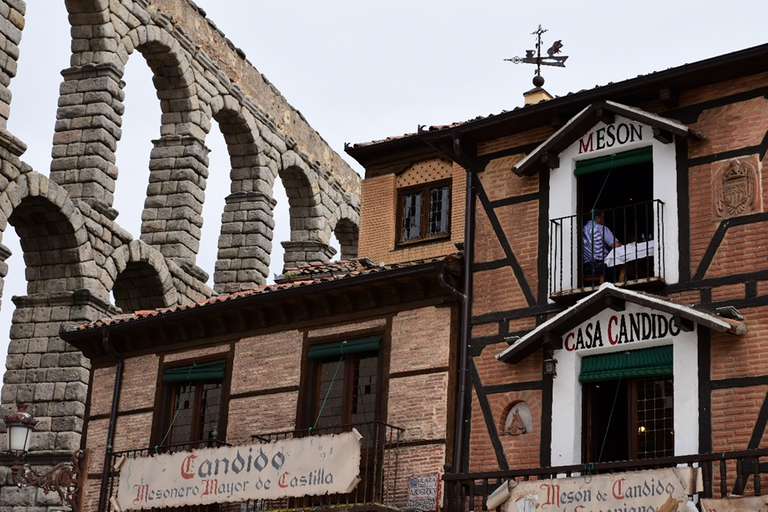
The city is surrounded by a Wall of 3 kilometers, 80 towers and 5 gates, from the time of Alfonso VI. Built in granite, today it runs through the old town with only three of the five original doors. The part that is still intact is around the Puerta de San Andrés from where you can climb the walls and see the place where there was a Jewish necropolis.

The center of the city of Segovia, together with its Aqueduct, have been declared, by UNESCO "World Heritage" in 1985.
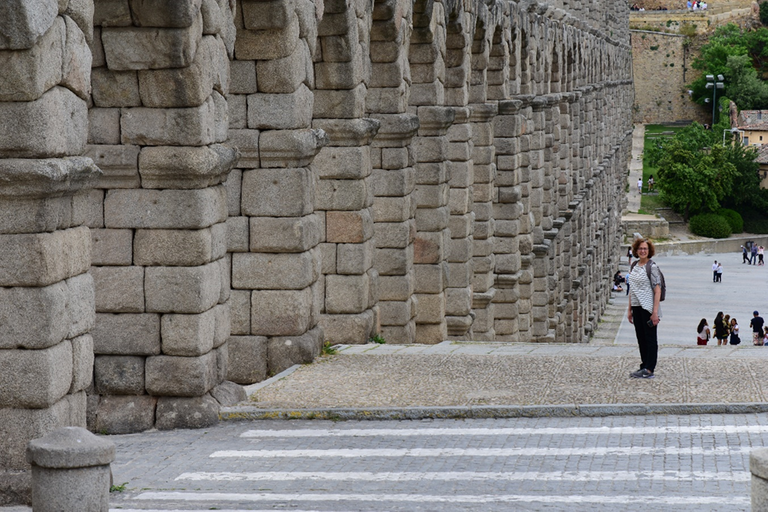
Bibliographic references:
“Un poco de historia de Segovia”: https://www.viasegovia.com/turismo/segovia-ciudad-patrimonio/un-poco-de-historia-de-segovia/
“Historia de Segovia”: https://queverenelmundo.com/que-ver-en-espana/provincia-de-segovia/guia-de-segovia/historia-de-segovia/
“Acueducto de Segovia: historia, descripción y construcción”: https://www.fundacionaquae.org/ciudad-vieja-y-acueducto-de-segovia/
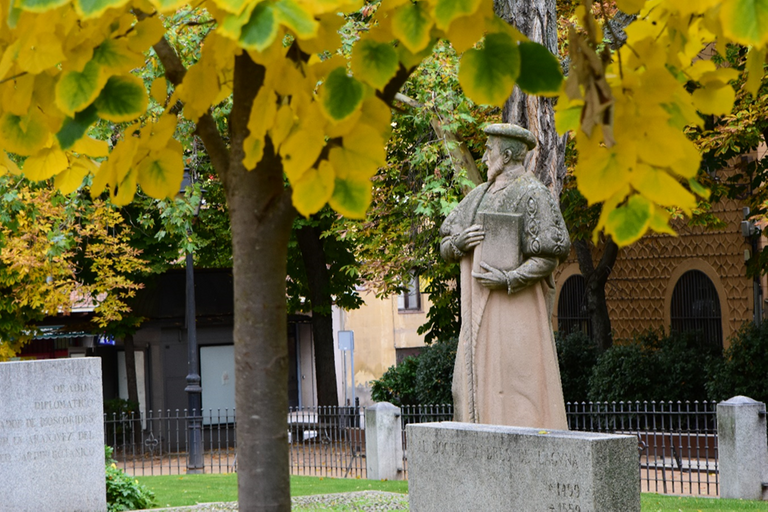

Estimados amigos, lectores y miembros de las comunidades que me hacen el honor de leer y evaluar mis posts. Siguiendo con la utilización de la serie de fotografías que mi cuñado Alfonso ha realizado en sus innumerables viajes, en esta oportunidad, tengo el placer de compartir con ustedes las fotos, tomadas en 2016, de la ciudad de Segovia, en España, la que tuve la suerte de visitar en el año 1985. Las que van acompañadas, como es preciso, de un texto introductorio y notas a pie de las fotografías que permiten darle cuerpo a este escrito que espero lo lean con agrado. Aquí les envío el enlace de Alfonso para que puedan ver la calidad y variedad de sus fotos Alfonso Celi @alfceli en Instagram
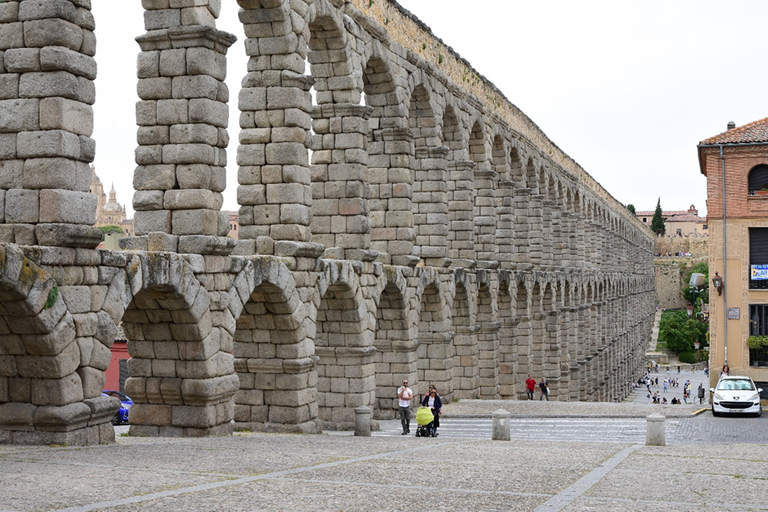
En la unión de los ríos Eresma y Clamores, bajo el cobijo de la Sierra de Guadarrama, se levanta la ciudad de Segovia, a unos 92 kilómetros de Madrid. Resulta increíble que una pequeña ciudad como lo es Segovia tenga entre sus murallas tanta historia, en ella se puede apreciar el legado cultural y patrimonial dejado por la convivencia de musulmanes, judíos y cristianos, todo lo cual se puede conocer caminando por sus calles, preferiblemente cuando el clima sea benigno.
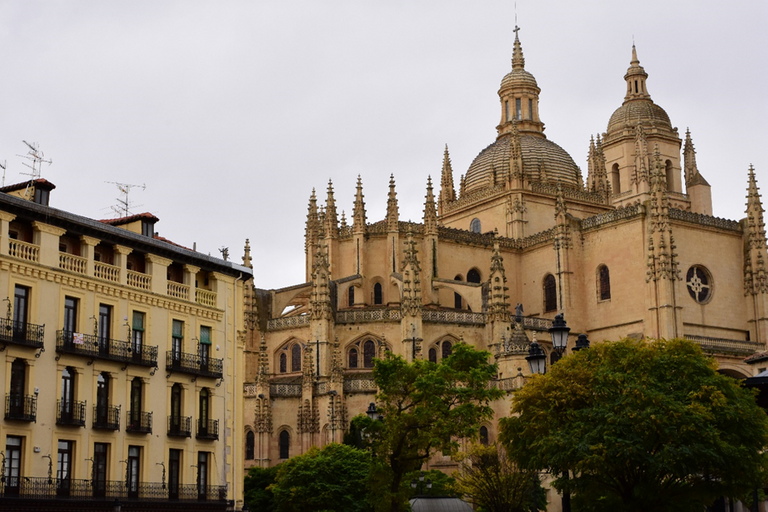
Segovia encierra, entre sus murallas: torreones, iglesias románicas, sinagogas, conventos, plazas, jardines y estrechas cuan retorcidas callejuelas, al igual que un alcázar. Sin embargo, el ícono más conocido, a nivel internacional, de la ciudad es su acueducto, que incluso forma parte del escudo de la ciudad, una impresionante obra de la ingeniería civil romana que se construyó a principios del siglo II, cuyo fin era llevar el agua desde la Sierra de Guadarrama hasta Segovia, para abastecer del preciado líquido a los habitantes de la ciudad. En total hace un recorrido de unos 17 km con canales bajos, al ras del suelo e incluso que se han convertido en subterráneos en la actualidad. El acueducto luego se eleva en el centro de Segovia formando 166 arcos, a sus pies se han construido plazas como la de Azoguejo desde donde se puede apreciar una arquería del Acueducto que llega a alcanzar los 28 metros.
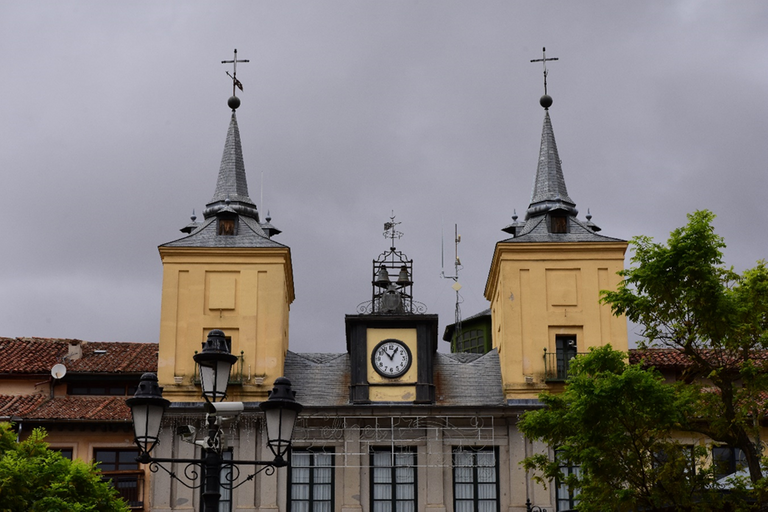
Impresiona el hecho de que en la construcción del Acueducto no se utilizó ningún tipo de cemento o argamasa entre los bloques de granito que conforman su estructura, de manera que se mantiene unida solo por el equilibrio de fuerzas. En España, país de grandes leyendas, se cuenta que había una joven encargada de llevar agua a la ciudad, pero se cansó de realizar tan ardua tarea, por lo que pensó que debería haber una forma de que el trabajo se hiciese solo, entonces, hizo un pacto con Satanás: si el acueducto estaba terminado a la mañana siguiente, ella le entregaría su alma. La joven tuvo la suerte que al amanecer al diablo aún le quedaba una piedra por colocar, por lo que salvó su alma y además logró su propósito de quitarse el trabajo de encima.

Luego de dejar la emoción producida por el imponente Acueducto, se adentra uno en la ciudad. Al llegar a la Plaza Mayor se observan la Catedral, conocida como la “dama de las catedrales” es una iglesia construida entre los siglos XVI y XVIII, de estilo gótico con algunos rasgos renacentistas, el palacio del Ayuntamiento y el busto del poeta Antonio Machado que engalanan la Plaza

La ciudad está rodeada por una Muralla de 3 kilómetros, 80 torres y 5 puertas, desde la época de Alfonso VI. Construida en granito, en la actualidad recorre el casco antiguo con solo tres de las cinco puertas originales. La parte que aún queda intacta está alrededor de la Puerta de San Andrés desde donde se puede subir a las murallas y observar el lugar donde hubo una necrópolis judía.
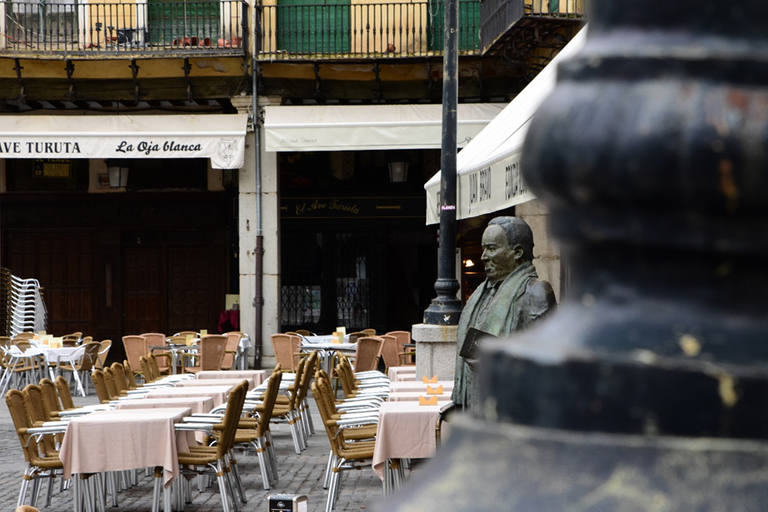
El centro de la ciudad de Segovia, conjuntamente con su Acueducto, han sido declarados, por la UNESCO “Patrimonio Mundial” en 1985.

Referencias bibliográficas:
“Un poco de historia de Segovia”: https://www.viasegovia.com/turismo/segovia-ciudad-patrimonio/un-poco-de-historia-de-segovia/
“Historia de Segovia”: https://queverenelmundo.com/que-ver-en-espana/provincia-de-segovia/guia-de-segovia/historia-de-segovia/
“Acueducto de Segovia: historia, descripción y construcción”: https://www.fundacionaquae.org/ciudad-vieja-y-acueducto-de-segovia/
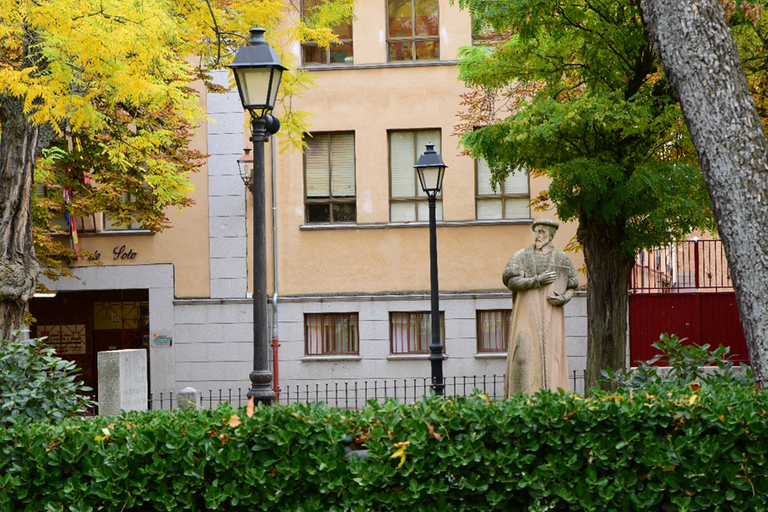
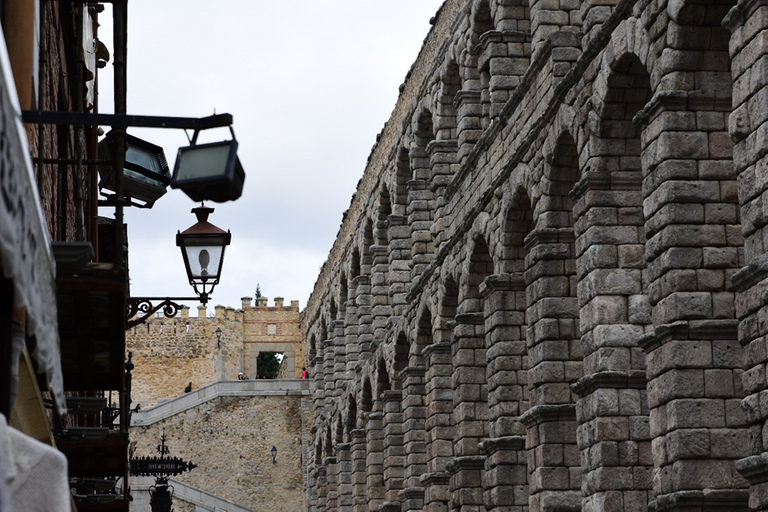
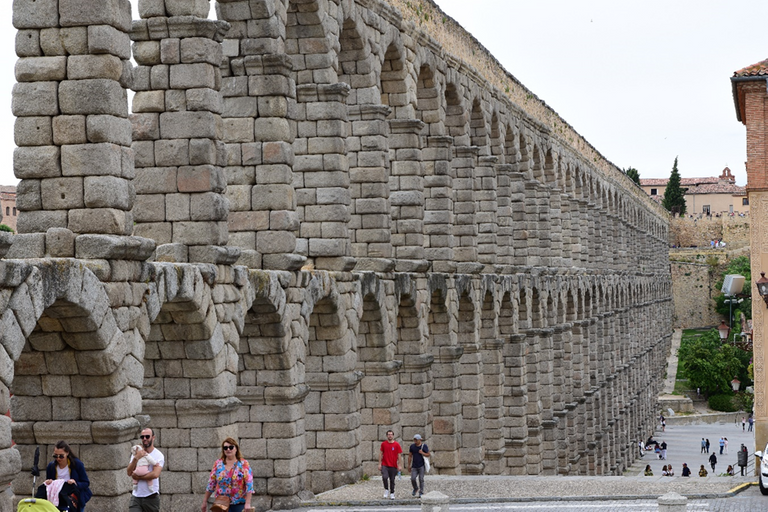
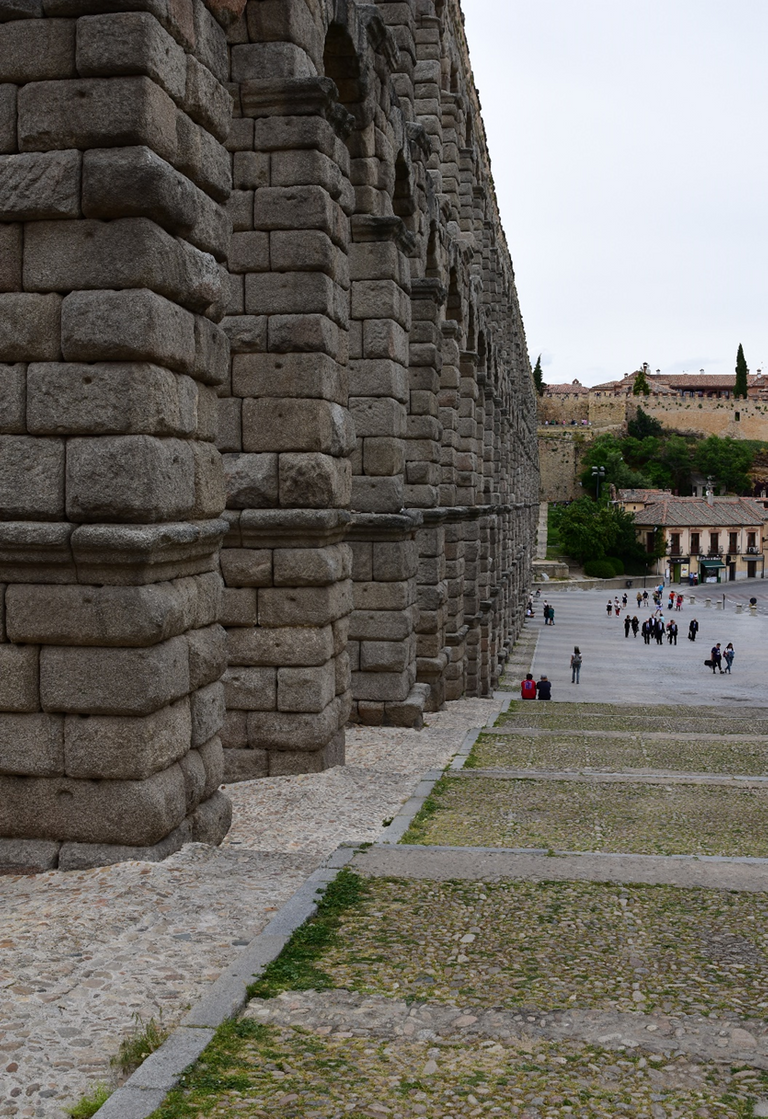

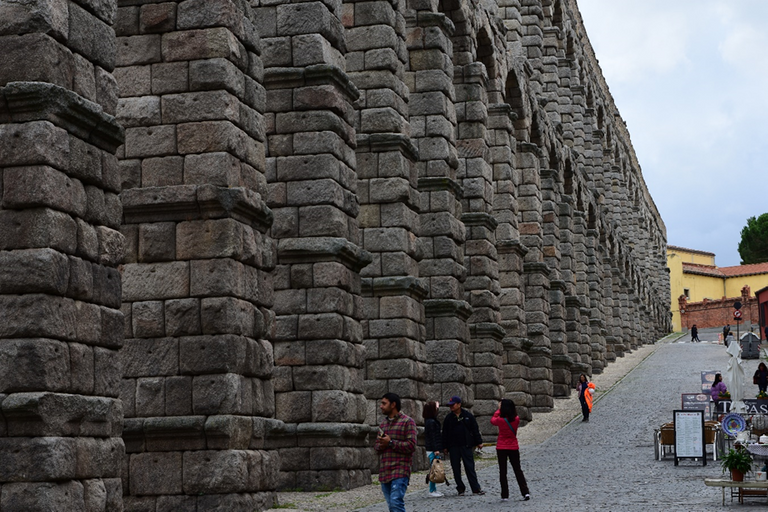
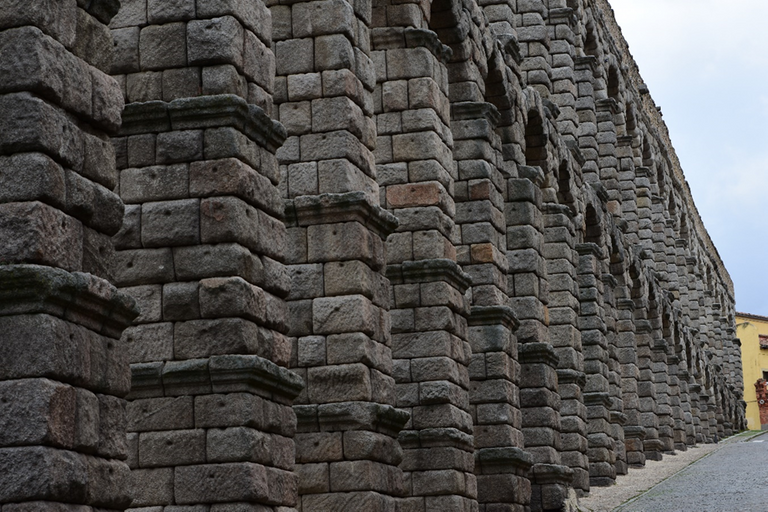

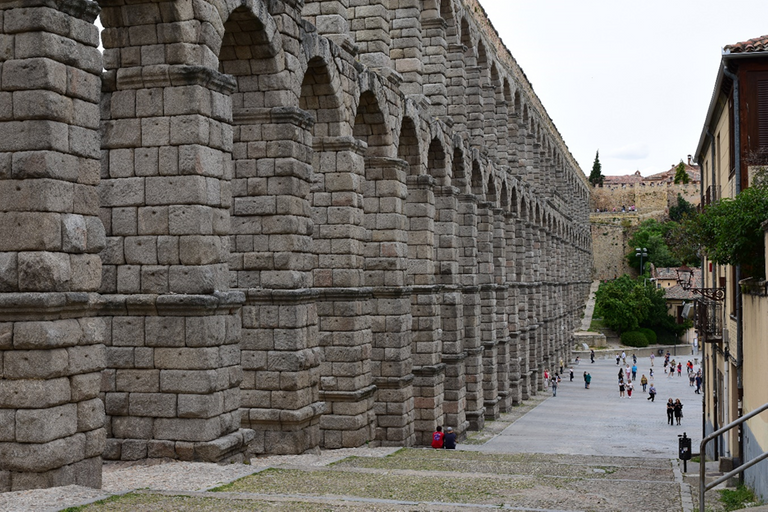
Congratulations, your post has been added to Pinmapple! 🎉🥳🍍
Did you know you have your own profile map?
And every post has their own map too!
Want to have your post on the map too?
Hello Pinmapple friends, thank you for placing my post in your community. Happy week
Great post, I didn't know this city :) thanks for sharing.
Hello Will, good morning, Spain is a country very rich in structures of various types that are representative of a very heterogeneous history. It is a pleasure to share with you the architectural wonders that I know and / or have visited. Happy and productive week
Segovia is beautifully impressive, especially this structure.
Hola friend afterglow, indeed the monumental aqueduct of Segovia is the crown jewel in the architecture of that city. Unfortunately I had no photos of the Alcazar, a medieval castle that was built in the 12th century, which I am sure would have delighted everyone's aesthetic taste. I hope you enjoy an enriching week
Hello my dear and admired Professor, colleague, friend and neighbor @besamu thank you for showing us part of the city of Segovia and its imposing and impressive work of Roman civil engineering, the aqueduct. Greetings and infinite blessings.
Hello dear Marcos, thank you for your words and blessings. As I said to one of our readers (Will) "Spain is a country very rich in structures of various kinds that are representative of a very heterogeneous history", I hope, in the future, to dedicate a post to the Alcazar of Segovia, a medieval work of the 12th century, which leaves those who visit it astonished. Receive my best wishes for your personal and family well-being and happiness.
Hola estimado Marcos, gracias por sus palabras y bendiciones. Como le comentaba a uno de nuestros lectores (Will) "España es un país muy rico en estructuras de diversa índole que son representativas de una historia muy heterogénea", Espero, en el futuro, dedicarle un post al Alcazar de Segovia, obra medieval del siglo XII, que deja atónito a quienes la visitan. Reciba usted mis mejores deseos por su bienestar y felicidad personal y familiar.
Hiya, @lizanomadsoul here, just swinging by to let you know that this post made it into our Honorable Mentions in Daily Travel Digest #1398.
Your post has been manually curated by the @pinmapple team. If you like what we're doing, please drop by to check out all the rest of today's great posts and consider supporting other authors like yourself and us so we can keep the project going!
Become part of our travel community:
Thank you Pinmapple friends for placing my post on the Honorable Mention in Daily Travel Digest #1398
Hello dear Benjamin. The Spanish city of Segovia is certainly a location rich in history as shown in its heritage landmarks. The coexistence of Muslims, Jews, and Christians, also invites the interesting mixtures of various cultures. The photos of your brother-in-law Alfonso, taken in 2016, must have triggered the strong nostalgia of your previous visit in 1985.
Based on your photos, the aqueduct seems to be in good condition. And I'm simply fascinated by the construction technology used by the original builders, though primitive, still made its building successful. I'm also thankful that no natural disasters like earthquakes have damaged that formidable structure. Epic publication!
Hello dear friend Erne, thank you very much for your comments. When I was under the aqueduct, I wondered if an earthquake had ever occurred, like those that Mother Nature is used to doing in Venezuela and many other places on the planet. I imagine the engineers who built this engineering work knew it was not a seismic zone, otherwise it was crazy to even think about building the aqueduct. I think Alfonso, my brother-in-law, is a tremendous photographer, which makes it easier to remember what one has experienced in those places and enrich ourselves with the new things he captures with his cameras. Receive a fraternal greeting
Well done @besamu! We're happy to inform you that this publication was specially curated and awarded RUNNER-UP in Architecture Brew #50. Congratulations!
Subscribe to Architecture+Design, an OCD incubated community on the Hive blockchain.